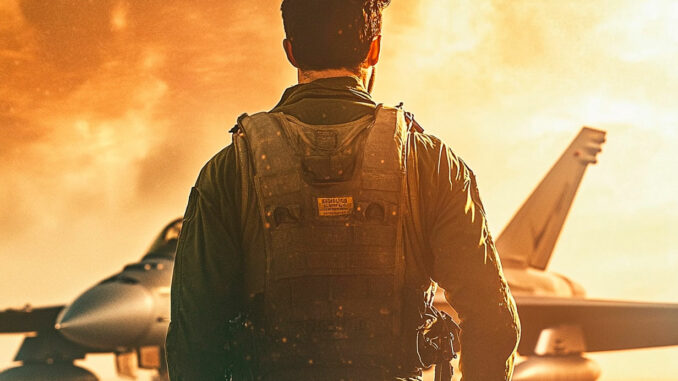
The International Flight Training School in Sardinia is attracting the world’s air forces with its advanced fighter pilot training, meeting the growing demand for qualified pilots.
The International Flight Training School (IFTS), located on the Italian island of Sardinia, is undergoing significant expansion to train fighter pilots from all over the world. With a current capacity of 80 students per year, the school plans to expand its facilities and fleet of M-346 training aircraft to meet increased demand. IFTS is a collaboration between the Italian Air Force, Leonardo and CAE, offering advanced training that incorporates cutting-edge technologies such as live, virtual and constructive training.
A training school coveted by international air forces
Located on the Decimomannu air base in Sardinia, the International Flight Training School has become a nerve center for fighter pilot training. Over the past three years, some 140 pilots from a dozen international air forces have graduated from IFTS. Major clients include the Italian Air Force and Qatar, followed by countries such as Austria, Canada, Japan, Saudi Arabia and the UK.
This is due to the quality of the training provided, which prepares pilots to operate on fourth- and fifth-generation combat aircraft. The nine-month course, known as Phase IV Advanced/Lead-in Fighter Training, combines live and synthetic flight training. Students benefit from in-depth training that includes air-to-air and air-to-ground missions, the use of GPS- and laser-guided munitions, and interception procedures.
Effective military-industrial collaboration
The IFTS is the fruit of collaboration between the Italian air force and the Leonardo and CAE companies. The air force directs the program, defines the syllabus and ensures the quality of training, while the industrial partners provide the facilities, aircraft and training systems. The school’s fleet comprises 22 M-346 aircraft: 18 belong to the Italian air force, 4 to Leonardo, and 6 others, owned by Qatar, are dedicated to training Qatari crews.
This cooperation ensures efficient maintenance of the aircraft and simulators, guaranteeing high operational availability. Instructors are drawn from both the military and industry, providing students with a wide range of expertise.

Advanced technologies for optimized training
One of IFTS’s major assets is its use of cutting-edge training technologies. In addition to flights on the M-346, students have access to a complete ground training system, including full-mission simulators, flight training devices and computer- and simulation-based training. This infrastructure enables students to develop their skills independently.
The school also exploits the Live, Virtual and Constructive (LVC) training concept, which integrates the virtual world with real flight. For example, pilots in the air can interact with teammates in the simulator, while technicians on the ground can generate and control virtual threats. This makes it possible to carry out complex scenarios, such as aerial engagements out of visual range, while optimizing resource utilization and reducing costs.
Meeting growing global demand
The need for IFTS expansion is largely due to increasing global defense spending and the renewal of fighter fleets. The closure of certain training centers, such as NATO Flying Training in Canada, has also contributed to the strain on Western training capabilities. In addition, technical problems affecting other training programs, such as the BAE Systems Hawk T2 in the UK, have prompted air forces to look for reliable alternatives.
As a result, IFTS has become the solution of choice for many countries. Hungary is the latest country to join the school, signing an agreement on September 19. IFTS is also recognized as one of the NATO Flight Training Europe (NFTE) campuses, which could attract more European nations in the future.
Economic and operational benefits
By downloading certain phases of training onto the M-346, IFTS enables air forces to make significant savings. Training pilots on less expensive training aircraft reduces the expense of front-line aircraft such as the Eurofighter Typhoon, F/A-18, F-16 or F-35. In addition, pilots are better prepared when they join their operational unit, shortening the time needed to reach operational status.
According to Lieutenant-Colonel Marcello D’Ippolito, Commander of the Italian Air Force’s 212th Flight Squadron, this approach makes it possible to “train four students with just two aircraft in the air”, thanks to the integration of simulators. This translates into more realistic and cost-effective training.
Dedicated infrastructure for intensive training
IFTS facilities have been designed to provide an environment conducive to intensive training. The 130,000 m² campus includes student accommodation, a sports hall, swimming pool and cafeteria. Ground training facilities include simulators, classrooms and briefing rooms. New hangars and shelters have been built for maintenance and runway operations.
The location in Sardinia offers favorable weather conditions all year round and access to vast airspace for training. The school carries out between 30 and 40 sorties a day, taking full advantage of these geographical advantages.
Future prospects
Faced with growing demand, IFTS plans to expand its capacity. The foundations have already been laid for new student accommodation, and plans are afoot to expand the M-346 fleet. The aim is to continue attracting international air forces by offering high-quality training tailored to current defense requirements.
The collaboration between the Italian air force and private industry is a model that could inspire other similar initiatives. By combining military expertise and technological innovation, IFTS has positioned itself as a major player in the field of fighter pilot training.
War Wings Daily is an independant magazine.